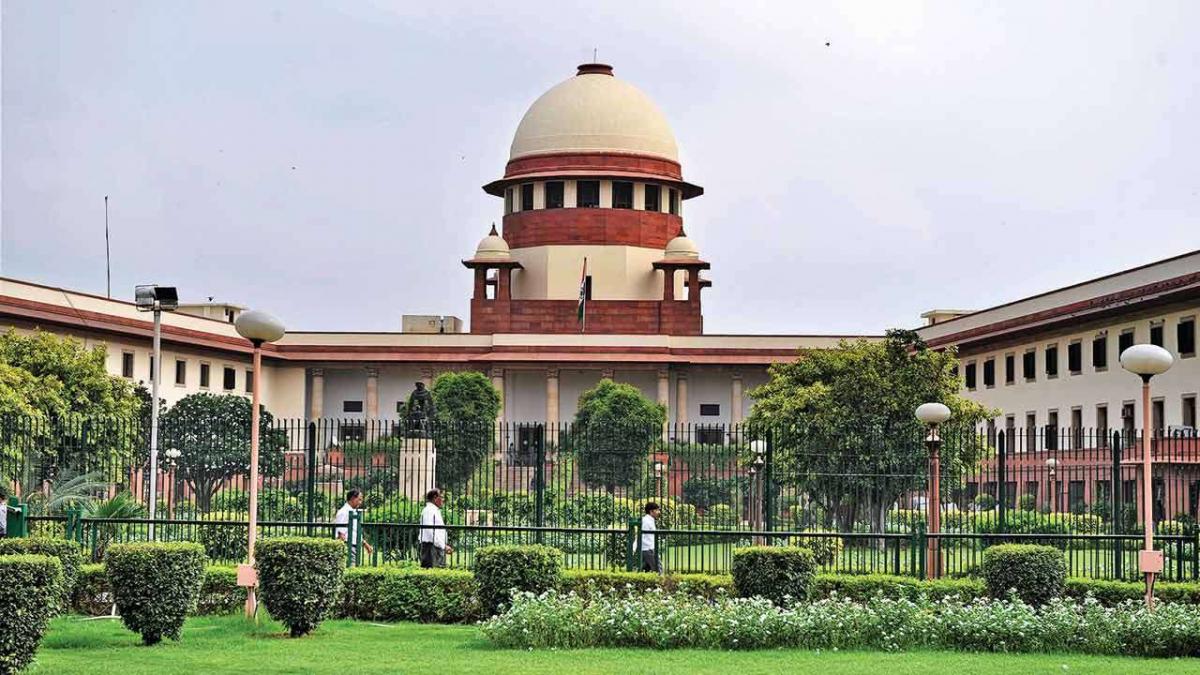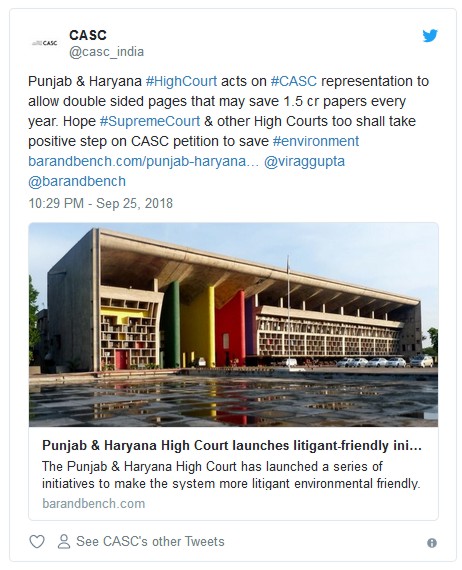Mumbai: As many as 61,520 cases were filed in the Supreme Court (SC) between October 2016 and September 2017, and using paper printed on both sides in filings would have saved nearly 2,953 trees and 246 million litre water (24,600 tankers–considering one standard tanker-truck holds 10,000 litre), according to an analysis by the Centre for Accountability and Systemic Change (CASC), a New Delhi-based think tank.

A public interest litigation (PIL) was filed in the SC by CASC on September 5, 2018, seeking directions to use paper printed on both sides in pleadings and filings before the apex court.
Another PIL, filed on August 8, 2018, in the Delhi High Court by CASC–with the above objective–said using paper printed on both sides would have saved over 27,000 trees and 2,000 million litre water based on the number of cases filed in one month before the subordinate courts and high courts across the country.
The petitions highlight large-scale paper consumption–double-spaced typing and wide margins–in courts. “Using line spacing as 1.5 instead of 2 causes 25% savings of paper. Similarly, using smaller fonts cause 30% savings of paper,” the petitions said.
Courts use paper printed on one side because of official formats and a tradition that dates to the years of typewriters, which are still used in many courts.
How paper printed on both sides in courts can save resources
A tree produces 8,333 sheets of virgin–non-recycled–paper while it takes 10 litres (2.6 gallons) of water to create a piece of paper, says a 2010 paper by Ruth Anne Robbins, Conserving the Canvas: Reducing the Environmental Footprint of Legal Briefs by Re-imagining Court Rules and
Document Design Strategies.
Considering 61,520 cases in the SC with only two parties per case, eight sets of files would be required–four for the court and one each for the parties and their counsel. If each petition is of 100 pages, a minimum of 49.2 million papers would be required.

This means, 5,906 trees would have been used to make 49.2 million sheets of paper. So, using paper printed on both sides would have saved 2,953 trees and 246 million litre of water.
The amount of water saved could provide 12 million people–the population of Bengaluru, a city that may run out of water in 12 years–their basic water requirement of 20 litre per day for cooking & drinking.
Bengaluru is supplied 100 litre water per person per day of which only 20 litre is used for cooking, drinking and bathing purposes. The rest 80 litre is used for non-potable purposes like cleaning floors, flushing toilets and washing cars.
India is projected to fall 50% short of fresh water needs by 2030, according to this 2010 study by the Asian Development Bank.
“Paper products make up the largest component of municipal solid waste,” the petitions said.
“India is one of the biggest waste-creators, and more than one lakh metric tonne of waste paper is generated every day. Only 27% of waste paper is used in India, indicating that the remaining 73% is discarded unused.”
Across India, 1,504,528 cases were filed–including subordinate courts (1,391,426) and high courts (113,102)–between July 4, 2018 and August 4, 2018.
Considering 50 pages per case and six sets, using paper printed on one-side would have used over 451 million pages: i.e 54,165 trees. Using paper printed on both sides would have saved 27,083 trees and 2,257 million litre water–nearly 58% of Mumbai’s daily water supply requirement (3,900 million litre per day).
“The Supreme Court is considering to become paperless in phases,” P P Chaudhary, minister of state for law and justice and corporate affairs, told the Lok Sabha (parliament’s lower house) in a reply on July 25, 2018.
“Paperless work environment through introduction of e-office in the Supreme Court was started in 2013. The Supreme Court of India then launched the Integrated Case Management Information System (ICMIS) in 2017 with the introduction of digital filing.”
Digitised case records can now be sent to the SC from the high courts after implementation of the ICMIS. However, digitisation like scanning of case records, including fresh petitions, are still in progress, the minister said.
While e-filing was inaugurated in the Supreme Court in May 2017, “the process could not materialise due to non-digitisation of records in high courts”, the PIL in SC said.
“It was said that one could file an appeal in the Supreme Court by filling in only the grounds of the appeal and the Supreme Court would get the entire prior record directly from the high courts through digital means,” Gaurav Pathak, general secretary, CASC told IndiaSpend.
“The high courts have not been able to digitise all their records/case papers as there are many cases–including old ones–with thousands of pages, which they find it difficult to scan and upload.”
(Mallapur is an analyst with IndiaSpend.)
Courtesy: India Spend